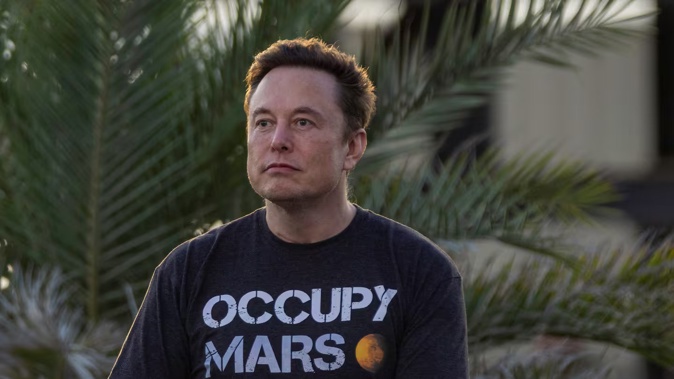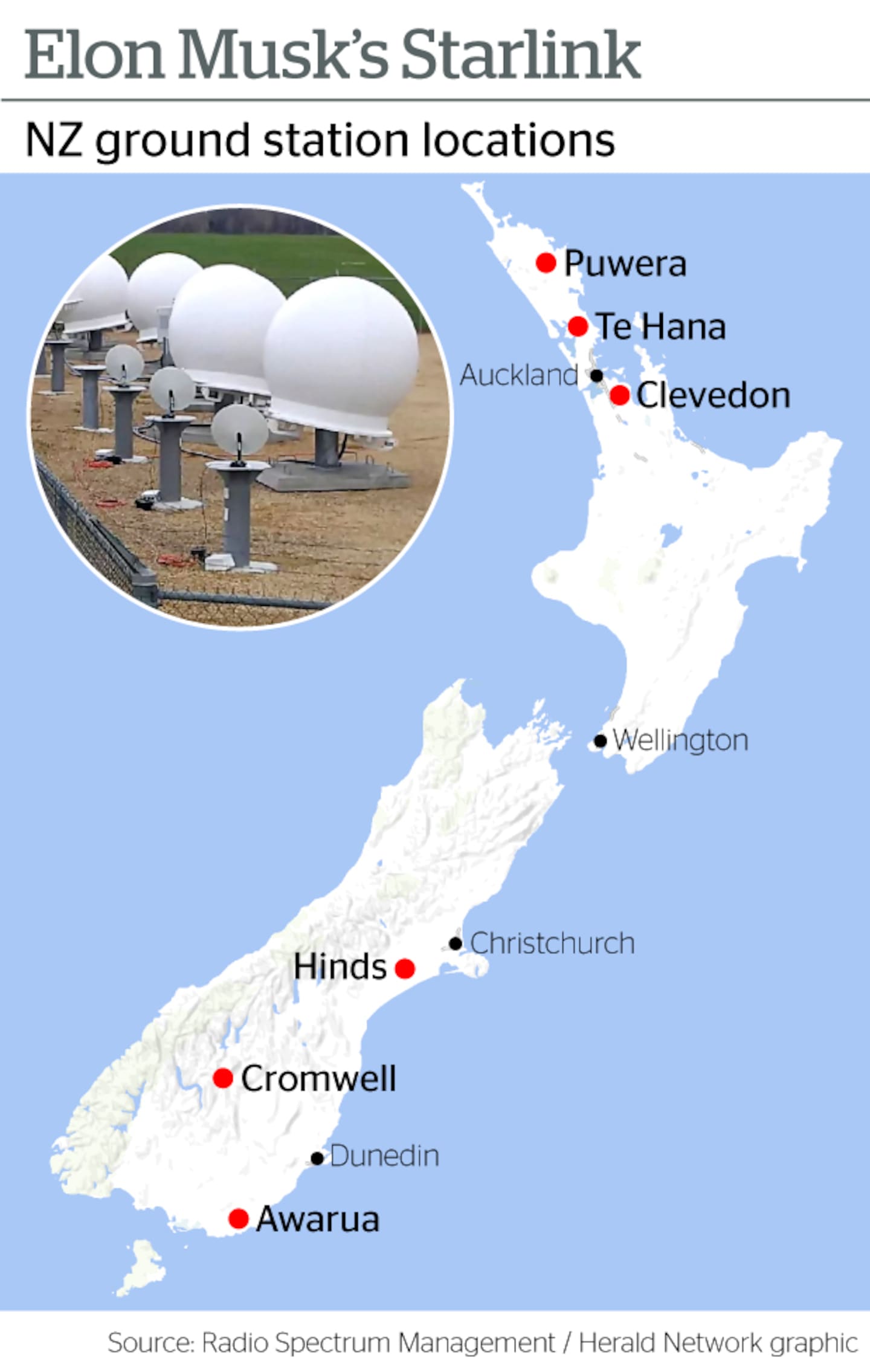
While the Government decides what to do about rural broadband – which remains slow and expensive, according to MBIE’s briefing to the incoming minister – private enterprise appears to be plugging some of the gaps.
Elon Musk’s Starlink more than tripled its number of users in New Zealand according to a market watchdog’s latest survey, released this morning.
12K to 37K during the past year
“Satellite continues to be the fastest-growing technology, following the entry of Starlink, with connections increasing nationally from 12,000 to 37,000 over the past year – the highest number of satellite connections per capita in the OECD,” according to the Commerce Commission’s 2023 Telecommunications Monitoring Report.
“Around 34,000 of these connections are in rural areas,” the report says. Although the regulator frames Starlink as a solution for rural broadband woes, Musk’s firm has also leaflet-dropped inner city Auckland and other urban markets.
Broadband via satellite has pushed into the mainstream consciousness since the launch of the SpaceX-owned Starlink in 2019 – with its first NZ service offered in 2021.
Starlink has more than 5000 satellites in low-Earth orbit (LEO) around 600km above the planet, eliminating the speed and latency issues with older geosynchronous satellites.
Satellite broadband has pushed into the mainstream consciousness since the launch of Starlink’s broadband-via-satellite service. The report says Starlink is the only LEO satellite operator with operations in NZ.
The report only tracks numbers up to June 30 last year, but indications are that it continues to grow. Starlink has run aggressive discounts on its satellite dish install kits (which are $599 standard), and over the past few months, it has introduced a “deprioritised data” plan that costs $79 per month (a full-speed plan is $159/month – a minimum speed is not put on either, but an independent tester for the ComCom has benchmarked the standard plan at a handy 184Mbits per second, and Herald readers with Starlink say it’s performed fine with the likes of Netflix, Zoom and gaming).
And, since ComCom’s reporting period closed, 2degrees, One NZ and Spark have all signed on as resellers of the business-grade version of Starlink, which features a larger, higher-gain dish (which costs $4567), monthly plans at $457 (50GB), $1700 (1TB) and $8529 (5TB) pricepoints (unlike residential plans, Starlink business does list indicative speeds: 40-220Mbps-plus upload, 8-24Mbps-plus upload and 20-60ms latency.)

Starlink was the fastest growing rural internet provider in the year to June 30, 2023, the Commerce Commission says. Source / 2023 Telecommunications Monitoring Report.
2degrees, in concert with the Crown-backed Network 4 Learning, has also been installing Starlink in rural schools. The telco also recently touted Fletcher Building as its largest Starlink Business customer, with 83 sites now equipped with Musk’s dishes.
“It’s certainly not surprising to see the growth of Starlink services seeing how ubiquitous it is across to motu,” Technology Users Association (Tuanz) head Craig Young told the Herald.
“We are very keen to see the arrival of competitors though to ensure price competition – as well as ensuring choice beyond one overseas-owned provider.”
US startup Lynk is in the early stages of creating a network of low-Earth orbit satellites to compete with Starlink.
Amazon-owned Kuiper has FCC permission to launch more than 3000 LEO satellites, but so far has only a couple of test birds in orbit.
The irony of the unregulated champ
In the meantime, the Commerce Commission says in its report, “Starlink is the only LEO provider with commercial operations in New Zealand. Starlink provides service to all parts of New Zealand capable of receiving a satellite signal, including Stewart Island and the Chatham Islands.”
The commission qualifies its praise for Musk’s firm, “Starlink’s LEO satellite broadband is significantly faster than other rural options but comes at a higher cost,” its report says.
But overall the regulator is profuse in its praise.
“It’s exciting to see competition heating up as Starlink – using its low-Earth orbit satellite technology – disrupts the rural market and forces a response from existing providers,” Telecommunications Commissioner Tristan Gilbertson said.
“Starlink is delivering speeds three times faster than other rural alternatives and consumers are voting with their feet – making Starlink the fastest growing rural broadband provider.”
The irony is that Starlink – a fully-owned subsidiary of Musk’s SpaceX – escapes much of the ComCom (and MBIE) scrutiny and regulatory costs imposed on local telecommunications providers. While the regulator has constantly hounded Spark, 2degrees and One NZ about how they market broadband - particularly fixed-wireless - and customer service metrics, Starlink is obtuse about the levels of service involved in its cheaper “deprioritised data” plan.

Starlink has a network of six ground stations in NZ, which connect its satellites to the internet.
Musk’s firm has not joined the Telecommunications Forum – the industry vehicle for compliance with government policy and industry-wide technical issues – nor the Telecommunications Dispute Resolution service. It pays peppercorn rates for the network of ground stations that connect its satellites to the internet as a whole.
Mobile too, soon
Soon, Starlink won’t just be about putting a satellite on your roof as an alternative.
Musk’s firm is launching a service that will let a stock-standard smartphone send and receive text messages via satellite – a mobile blackspot-beating service already available to owners of Apple’s latest iPhones for emergency SMS (whatever their telco) via a partnership with comms satellite provider GlobalStar (which also is one of Rocket Lab’s single largest customers).
One NZ says it will offer Starlink’s text-via-satellite service by year’s end under a deal that’s exclusive for a period. Voice calling and data by satellite are set to be added next year.
Spark and 2degrees have thrown in their lot with Lynk. The pair have both staged successful trials, but have yet to set a date for a commercial launch.
Chris Keall is an Auckland-based member of the Herald’s business team. He joined the Herald in 2018 and is the technology editor and a senior business writer.
Take your Radio, Podcasts and Music with you









